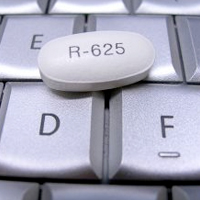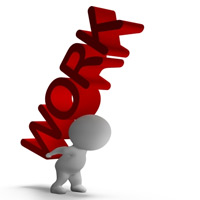 The Alexander Technique and Neck Tension.
The Alexander Technique and Neck Tension.
In 1998, just prior to learning the Alexander Technique, I developed severe, debilitating neck pain. This pain, which started in my hand, lasted months. It was caused by hunching over my musical instrument, for decades.
I tried just about everything for relief, and was even contemplating risky neck surgery.
One of the worst times during the day was when I had to walk. Although I was walking as smoothly as possible, every step brought spinal compression which was excruciating. Even back then I noticed that if I walked slightly faster and more rhythmically, it was easier on my neck.
The Alexander Technique and Back Pain.
As an Alexander Technique teacher, I notice similar occurrences with my students. Recently, a student with lower back pain, who had been making steady progress, noticed his pain worsened every time he went to a museum. We eventually discovered that it wasn’t the amount of time he was on his feet, or walking to and from the museum, or even the way he was looking at the paintings. His pain recurred because of the way he was walking in the museum. He was walking very slowly, for a few steps at a time, with a lot of “down”. He was doing the “museum walk”.
At our Alexander lessons we often practiced walking at different rates, but we had never specifically practiced very slow, short-distance, start-and stop walking as a practical goal. (In New York City, if you walk slowly, then stop, you will be trampled.)
Slow, start-and-stop walking tends to turn into a plodding, sluggish, lead-footed, flat, sinking movement.
The Alexander Technique and the Museum Walk.
When we mimed walking around the studio very slowly, pretending to look at paintings, we noticed he was adding uneccessary weight to every step. This contrasted with the way he walked on the street, which had momentum and was faster, smoother, and with a forward and up orientation.
We noticed when he did this museum walk, (which is also a kitchen walk), his torso was going forward and down instead of back and up. Additionally, when walking slowly for short distances, there was less of a natural spiral of the torso and less arm swing. This lends itself to tightness, rigidity, holding, extra downward pressure, and the concurrent mental attitude.
There is little rhythm or forward momentum when we do the museum walk. Our weight is slowly shifting from one foot to the other, and we may overplay the sway. An exaggerated sway leads to a downward pressure on the spine and the joints.
Going Up?
To underplay the sway, or downplay the sway, or keep the sway at bay, go up.
Think about your head moving up away from the top of your spine, yet taking your spine up with it. Peel your heel off the floor, and let your knee move forward. Continue the “up” thoughts as you shift your weight to your front foot, while still “falling upwards”. Fast or slow, let the “up” minimize the sway, the falling, and the sinking.
My student implemented these changes. Now, he can’t wait for the next exhibit to omit, inhibit, quit, and prohibit his habit!
Enjoy the museum!
Comments?
Mark Josefsberg-Alexander Technique NYC
(917) 709-4648











Hey Marc,
nice blog! I remember I used to yawn very much (so much that I got a little embarrassed, but I couldn’t help myself) when I was in a museum, but since I became an Alexander Technique teacher the yawning has stopped completely! Also probably a matter of not doing my museum walk any more so there is more oxygen flowing to my brain. Funny stuff!
Thanks Maaike!
I still yawn sometimes at a museum.
As a fellow Alexander Technique teacher, I also don’t do the museum walk anymore. I also add 2 cups of coffee, so I don’t yawn (or sleep) for the following week!
I have always noticed that its much more tiring walking around museums, unlike other walking which can be energizing. Alexander Technique is indeed invaluable, and makes visiting the museums truly pleasurable. Your student is lucky to have found you! Great blog!
Thanks so much, Imogen!
Yes, other types of walking can be energizing. Exactly! The Alexander Technique is invaluable, and we’re ALL glad we found it!
GREAT, GREAT PRACTICAL BLOG MARK!! I hope that people are really paying attention to this. We really always be aware and use thoughtful movement, especially when we find ourselves in smaller, more confined spaces.
THANK YOU!! 🙂
Thank You, Barbara! I hope it helps someone. I’m glad you called the post practical. That’s what i’m going for. Otherwise, UN-practical Alexander Technique? You’re right about being aware when we’re in confined spaces, as well as when we have to confine ourselves, in larger spaces.
Again, Thank You!!
Thank you so much for this post Mark, really good helpful practical advice…especially relevant in the summer holidays when perhaps we are more likely to be visiting museums and art galleries. I was recently in Stockholm with my family where we did visit alot of museums. I also found that if I actively became aware of the museum ceiling and expanded upwards towards it from the floor walking was easier….museum buildings are often beautiful and expansive spaces, sometimes with domed almost cathedral like ceilings. I found that considering the space I was in as ‘mine’ and everyone else welcome in it was another helpful way of claiming my true size. Greeting the museum with a sense of awe and wonder also became uplifting physically too. Happy Holidays 🙂
Beautiful, Angela!
It is kind of ironic that we make ourselves smaller even when we’re in an expansive space. I like all your ideas. It’s amazing how areas of our lives can be enhanced with the Alexander Technique, isn’t it?
Thanks for posting this! I love how it encourages people to think of an activity (walking) not as a static thing, but as something that they do in context and the context is as significant as the activity itself.
Thanks so much, Lindsay, and I agree!